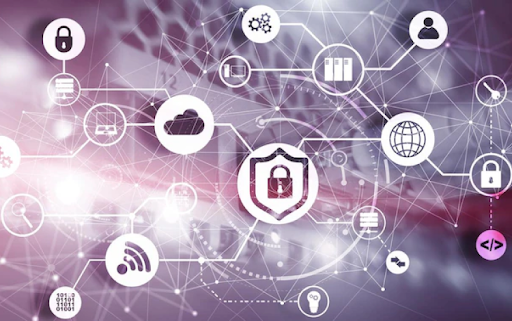Security in the digital age is an everyday concern for organizations as well as users
in light of the prevalence of increasing cyber attacks, data thefts, intrusions, and
exploits.
The loss incurred through mining sensitive data illegally is unbearable for the
customers and businesses both which is why it becomes quintessential for the
global audience to be aware of the emerging as well existing risks and
vulnerabilities posed to our digital assets of everyday use.

Advanced Persistent Threat (APT)
One of the targeted attacks that are witnessed by organizational entities at the
present time is Advanced Persistent Threat (APT). The word ‘advance’ suggests
that sophisticated and latest hacking techniques are applied to gain unauthorized
access to an enterprise’s private assets and stay for a prolonged time in the
intruded network to output disruptive consequences.
Who’s the Prime Target?
To make the unlawful attempts of data breaching a success, the targets are
carefully chosen, typically large-scale organizations or governmental agencies/
networks, high-value targets like nation-states, etc.
But this doesn’t imply that SMEs (small-medium-sized) companies can ignore this
type of attack. As black hat hackers keep eyes on small scale businesses who are
less defended and make up the supply chain as a way to get control over the IT
networks of big enterprises.
APT is a new way to commit attacks like malware, phishing, etc. to gain access to
proprietary information or trade secrets and with increased use of mobile
devices, APT’s tend to include attacks over e-devices.
What Are The Consequences Of An APT Assault?
APT assaults that occur cannot be executed with a single resource, instead, they
require a team of experienced hackers that possess a substantial financial backup
to execute their criminal activities.
The potential repercussions of APTs attacks include:
- Total site takeovers
- Exploited crucial and sensitive information (user/employee/client data leakage)
- Sabotaging of critical IT Hybrid infrastructure (erasing database data)
- IP (Intellectual Property) theft (patents/trade secrets)
Stages of a Progressing Advanced Persistent Theft Attack
Gaining unauthorized access to an institution or business and staying on its security
systems for long is achieved through a series of levels conducted and cleared by
malicious attackers.
The entire purpose is fulfilled via these five stages:
Procure Access
This is the level of entry to make way into a business’s security network via looking
for a weak infected file or a junk email or app vulnerability loophole to intrude and
insert malware into the target network.
Establish a Foothold
This is more of implanting the malware or virus into the pierced network and creating backdoors and dark tunnels to manipulate the administrative security tasks undetected. The hackers intelligently veil their track and trail.
Deepen Access
Reaching this level, hackers apply all sorts of techniques and tactics (like password cracking) to gain access to administrative rights and internal data to establish deep control of the digital systems.
Step Forward Laterally
Deepening the roots, hackers can move around the entire IT infrastructure at will and make attempts to access other servers, databases, repositories, and miscellaneous secure parts of the network.
Look, Learn, and Remain
While retaining their stay, cybercriminals learn about network security and the loopholes that can be exploited. They scan each branch of the IT network and look for vulnerabilities that can allow them to harvest the information they seek for.
Either they can keep the exploitation keep running or can withdraw once they accomplish their major objective. They often leave a backdoor to gain access again.
Signs to Detect a Possible APT
Although APTs are based on stealth and go unnoticed, it is possible to detect some signs that indicate that an entity may be the victim of this type of cyber attack:
- Unusual logins and activity on user accounts, especially if they occur outside of business hours.
- Increase in database activity, for example, mass data movements, creation of large batches of data, moves to external teams, etc.
- Presence of rear doors or backdoors.
- You find data bundled and ready for export in places where it shouldn’t be, or compressed files with extensions that aren’t commonly used.
- Fraudulent emails are detected to carry out spear-phishing attacks.
Effective Ways to Protect Against Advanced Persistent Attacks
Keep Equipment and Software Up-to-Date
Many APTs exploit vulnerabilities present in hardware and software, which is why it is essential to keep equipment and programs always updated to their latest version since if vulnerabilities are detected in them, they are patched through updates.
Deploy a Multifactor Authentication System
Since one of the first steps of an APT is to obtain the credentials of an employee, implementing a multi-factor authentication system can help to minimize this risk considerably.
Even if the attacker gets hold of the password, he will still have to get two more authentication factors that, ideally, will not be stored anywhere in the system itself.
Be Prepared With a Cybersecurity Plan of Action
Through a cybersecurity plan, entities will be able to establish security protocols and action in the event of stopping attacks, while implementing security measures according to risk assessments and analyses carried out periodically on systems and the internal network.
This plan must also contemplate flexible security solutions and measures, capable of adapting to any type of attack.
So Is Your Business Built to Ensure Cybersecurity?
Cybercrimes are never going to halt unless there are security loopholes left for hackers to exploit. APTs must be understood clearly and preventive measures should be taken to forestall an assault.
To orchestrate business network security CodeGlo’s IT team is well-equipped to foresee every stage of a cyberattack and have remediation techniques to restrict virus penetration and intrusions. To know more about how our IT Security Service solutions can best work to future-proof your infrastructure’s security, get in touch now.




